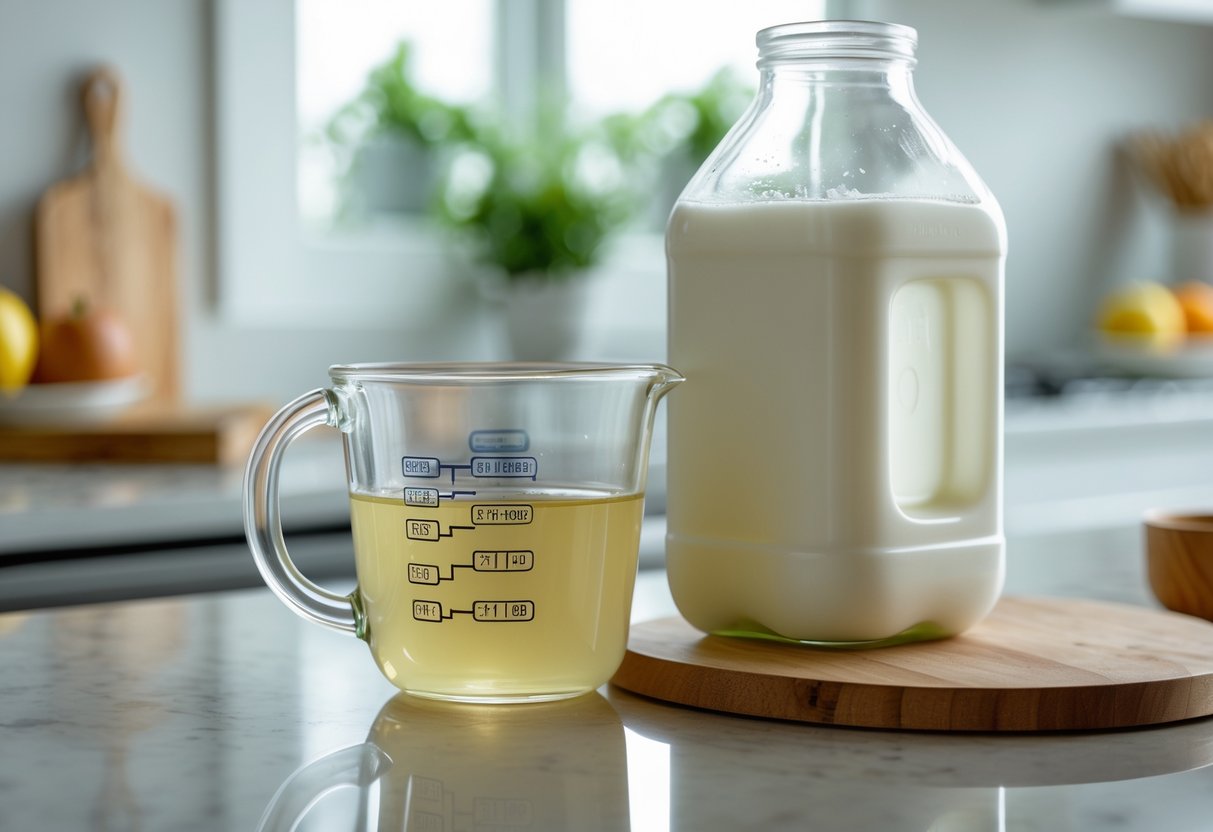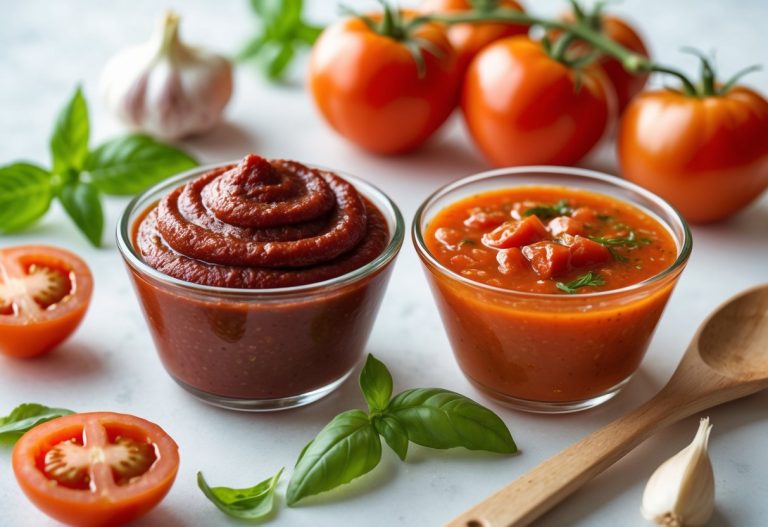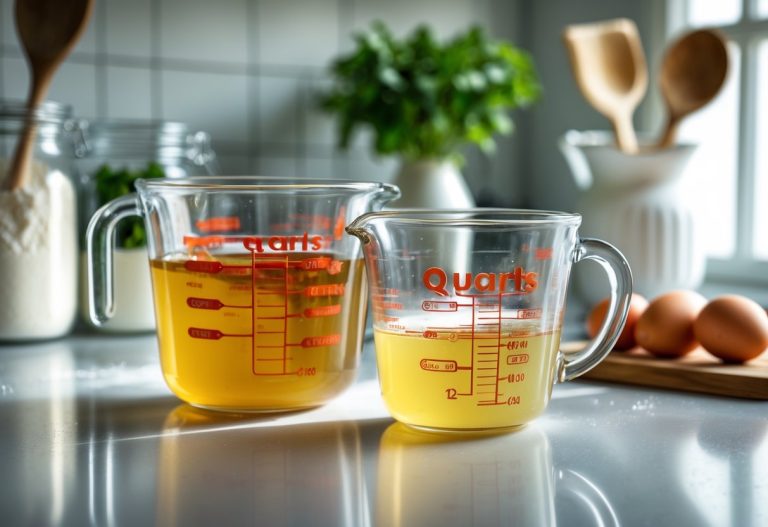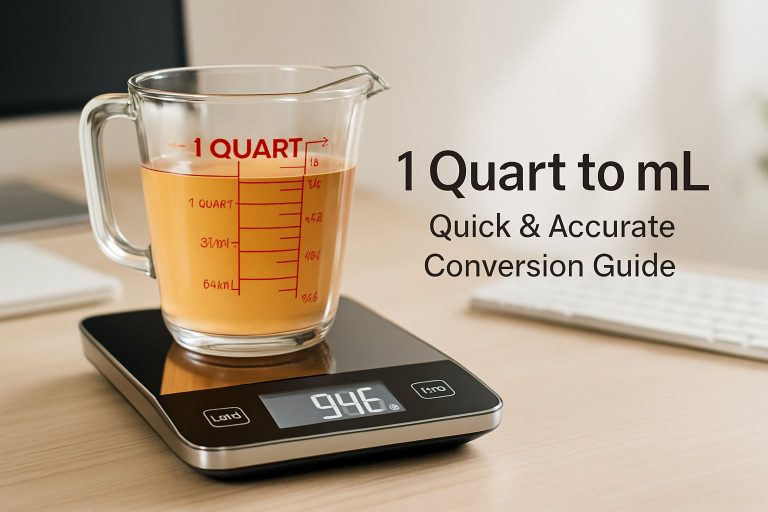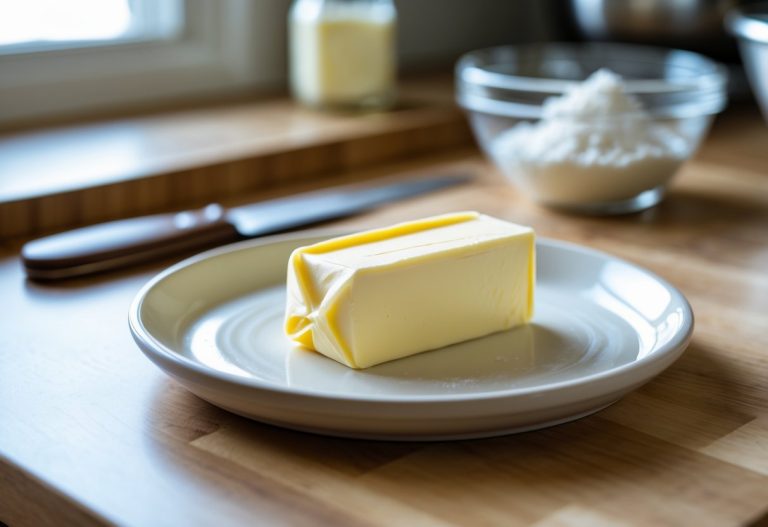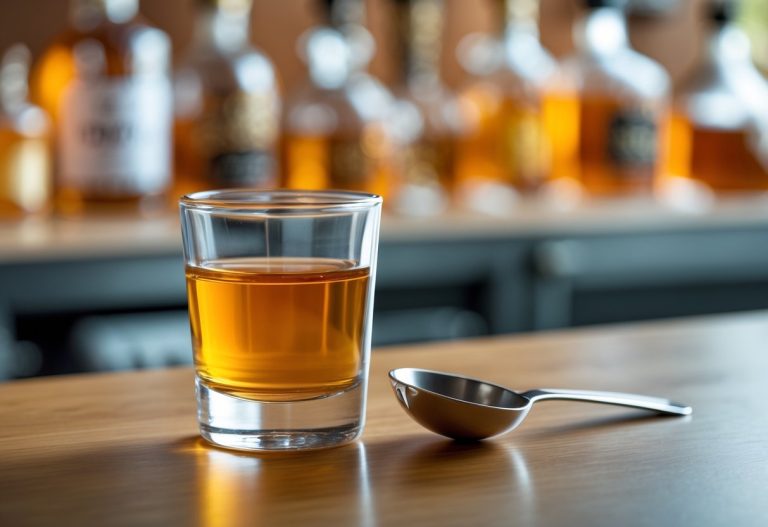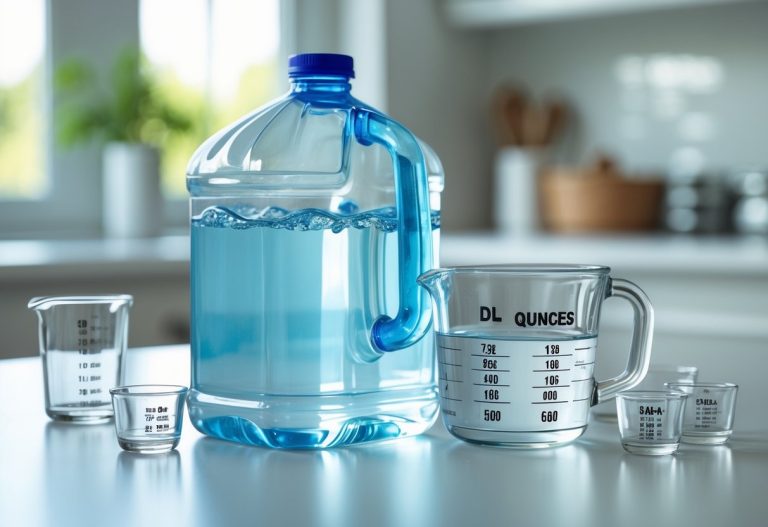How Many Cups Are in a Half Gallon – Easy Conversion Guide
If you’ve ever needed to measure liquids for cooking or baking, knowing how many cups are in a half gallon can save you time and confusion. There are 8 cups in a half gallon, which makes it easy to convert when you need smaller amounts.
Understanding this simple conversion helps you read recipes better and avoid mistakes. Whether you’re filling your coffee pot or making a big batch of soup, knowing these basic measurements keeps things running smoothly in the kitchen.
Understanding Cups in a Half Gallon

When you work with liquids or recipes, knowing how much is in a half gallon helps with exact measurements. It lets you convert volume in a way that fits your needs, whether you’re cooking or measuring liquids like water.
Exact Cup Measurement in a Half Gallon
A half gallon holds 8 cups. This is because 1 gallon contains 16 cups, so half of that is 8 cups. When measuring, remember that a cup here means a standard liquid cup used in cooking.
You can also think of it as:
- 1 half gallon = 8 cups
- 1 cup = 8 fluid ounces
- So, half a gallon = 64 fluid ounces
If you need metric amounts, 1 half gallon is about 1,892 milliliters or 1.89 liters. Using measuring cups or a liquid measuring jug helps keep your measurements exact.
Half Gallon Compared to Other Common Measurements
A half gallon is half of a gallon, which is an easy way to scale recipes and liquids. It equals:
| Measurement | Amount |
|---|---|
| Half gallon | 8 cups |
| Half gallon | 64 fluid ounces |
| Half gallon | About 1.89 liters |
| Half gallon | 2 pints |
| Half gallon | 4 quarts divided by 2 |
Knowing this makes it simple to switch between cups, fluid ounces, and liters depending on what your recipe calls for.
Why Knowing Cup Conversions Matters in Cooking
You want the right amount of liquid to get the best results in recipes. Using incorrect volume can change how food cooks or bakes. Knowing that a half gallon is 8 cups helps you avoid guessing.
When a recipe calls for a half gallon of water or milk, you can measure it directly with your cups without confusion. It saves time and makes your cooking smoother.
Also, volume conversions help when you use different measuring tools, like measuring cups or pitchers, ensuring your food turns out just right.
Common Conversions and Practical Tips

Knowing how to switch between different measuring units helps you follow recipes better and avoid mistakes. It also makes cooking smoother when you need to scale ingredients or switch between liquid and dry measurements.
Converting Between Cups, Pints, and Quarts
You should remember these key conversions:
- 1 pint = 2 cups
- 1 quart = 2 pints = 4 cups
- 1 gallon = 4 quarts = 8 pints = 16 cups
This means a half gallon is 8 cups, or 4 pints. When you see pints or quarts in a recipe, you can easily change them into cups so you measure with your cups.
Also, 1 quart holds 32 fluid ounces, and 1 pint has 16 fluid ounces. This helps if your recipe uses fluid ounces instead of cups. Keeping these numbers in mind lets you measure ingredients like milk, honey, or water correctly.
Fluid Ounces and Their Role in Recipes
Fluid ounces measure volume, mostly for liquids like milk, water, or oil. 1 cup equals 8 fluid ounces. So, when a recipe calls for 16 fluid ounces, that’s 2 cups.
Sometimes recipes use fluid ounces to be more exact. For example, if you need 24 fluid ounces of honey, you can measure 3 cups. Measuring spoons are usually too small for fluid ounces, so use a liquid measuring cup for accuracy.
Remember, fluid ounces measure volume, not weight. That means 8 fluid ounces of honey won’t weigh the same as 8 fluid ounces of milk.
Metric System: Milliliters and Liters
You might see milliliters (ml) or liters (L) in recipes outside the US. 1 cup is about 240 ml. Half a gallon is roughly 1.9 liters.
If your measuring cups don’t show metric units, you can use a kitchen scale or a converter chart. For example:
- 1 liter = 4.2 cups
- 500 ml = about 2 cups
Knowing these helps when you buy products or use international recipes that list milliliters and liters.
Tips for Accurate Measuring in the Kitchen
Use the right tools for better results. For liquid measurement, use clear liquid measuring cups with a pouring spout. For dry ingredients, use dry measuring cups and level off with a knife.
Check if your recipe uses volume (cups) or weight (ounces). Flipping between the two can cause errors, especially with thick liquids like honey.
Measure liquids on a flat surface and check at eye level to avoid spills or underfilling. Keep in mind that 1 tablespoon equals 3 teaspoons when you need small amounts.
Using correct measures saves time and helps your cooking taste just right every time.
